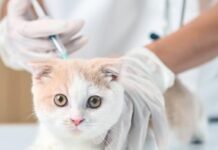Some cats are simply perfect patients. They sit calmly for nail trims and they let you look inside their mouths and even brush their teeth, purring all the while. Other cats, however, are not so accommodating. You merely think about trimming their nails and they disappear in a flash. Getting a pill into them requires 288 protective gear and strong determination. Most cat owners know that there are a lot of different ways of getting medications into cats, but the desperate owners of hard-core pill haters sometimes need to go the extra mile to find a solution. It can be extremely frustrating to be unable to give your cat her much-needed medication – but sometimes worse is the negative association it creates in the animal. Preserve the Bond. The best owners are the ones who love their cats deeply and are determined to preserve their health. They are also the most distressed when this love makes them the enemy as far as their cats are concerned. More and more veterinarians and pet owners are turning to custom-made compounded medications as a welcome solution. But you need to use them wisely. Compounding pharmacies put drugs into forms not commercially available, in doses appropriate for individual patients. But long before the word “pharmacy” came into existence, indigenous peoples were creating remedies from various materials in their environment, usually plants. Combining different agents, or “compounding,” was considered an art form and was practiced only by village shamans or priests. Today, pharmaceutical history has come full circle, and custom compounding plays an important and respected role. In fact, it accounts for many of the prescriptions shipped to clients across the country by the registered pharmacists at the Cornell University Hospital for Animals. Physicians, patients, veterinarians and pet owners are recognizing once again the importance of tailoring medications to individual needs. A Spoonful of Sugar. The active ingredients in compounded preparations can be put into a wide variety of forms: transdermal patches, creams, ointments and gels for topical administration; nasal and oral sprays; otic insufflations (preparations designed to be blown into the ear); suppositories and more. Giving Fluffy her medication in a bacon-flavored liquid or a tuna-flavored chewable tablet can turn “trial” into “treat” – but it might take some experimenting to find the right preparation. Pet owners love compounded medications because they are convenient, but experts have other reasons for using them. The following situations can be helped with the use of compounded medications: When a pet is prescribed dose-critical medications. Its essential that the cat receive the entire dose, exactly as prescribed, and giving partial pills or liquids might not be reliable enough. When the prescribed medication only comes in an inconvenient strength. Some prescriptions call for a lower dose than whats available commercially. Capsules, for instance, are impossible to divide accurately. When the medication is otherwise unavailable. Some products have been taken off the market due to problems in humans. Because many drugs used in veterinary medicine are human-grade drugs, this makes them unavailable to veterinarians even when there are no problems with use in animals. The raw chemicals needed to compound the drug, however, are still available to pharmacists, so this becomes the only way for veterinarians to get the product. Treatment You Can Count On. While all pharmacists are trained in compounding, few of them now do it routinely, and even fewer do it for the veterinary market. Its important that a pharmacist be familiar with the specifics of formulating preparations for animals. When clients are treating a pet with a long-term illness, its vital that a medication source be reliable. If a pharmacy moves or goes out of business, a veterinarian can be left scrambling to find a substitute. Its also extremely important that the product remain consistent. If a pharmacy suddenly stops carrying a certain product or it changes to a different flavor, an owner might find her cat refusing to take the new formula. Some veterinary colleges – such as Cornell Universitys – have registered pharmacists who specialize, or are board-certified, in veterinary pharmacology and who offer compounded drugs to veterinarians all over the country. And in recognition of the growing need for veterinary compounding, national compounding pharmacies are springing up, to the delight of some veterinarians. National pharmacies can sometimes provide a wider range of products than smaller, local pharmacies, and some ship directly to the client as well. Of course, pet owners still have to go through their veterinarians in order to obtain the products. When medications are produced commercially, the manufacturing process ensures a high level of quality control. When custom-compounded medications are made by individual pharmacists, human error becomes a natural factor, so you should check the label every time you get a refill. Preserving the Bond. In the past, when a beloved cat resisted treatment, the choices were limited: Force the issue and build resentment, or dont force it and watch the cats health deteriorate. Thoughtful, appropriate use of customized medication through compounding can help preserve the animals health, without compromising the owner-pet relationship.



